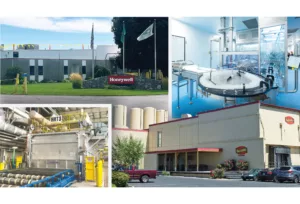Spotting first hints of lung cancer
Study's early-detection focus includes special type of bronchoscopy

The Providence Regional Cancer Center here has joined a long-term, international study on the early detection of lung cancer, including through the use of a procedure called autofluorescence bronchoscopy.
The cancer center is a partnership of Providence Sacred Heart Medical Center & Children's Hospital, which is Spokane's largest hospital, and Providence Holy Family Hospital, on the city's North Side.
The cancer center has become one of 15 entities participating in the Stacey Scott Lung Cancer Registry, administered by the Roswell Park Cancer Center, in Buffalo, N.Y., which is serving as a data coordinating center for the registry.
The registry says on its website that it "will combine the resources of lung cancer physicians and scientists worldwide by pooling data in one location. Then, by organizing the data and making it accessible, the registry will dramatically increase the potential to identify people at highest risk of lung cancer and to detect lung cancer at its earliest stage."
The principal investigator for the study here is Dr. Gregory M. Loewen, a pulmonary oncologist and the director of the Providence cancer center's lung cancer program. Loewen worked at Roswell Park as director of the pulmonary cancer research program for 15 years, before moving here to practice in 2007, and helped found the Stacey Scott Lung Cancer Registry. His former research partner, epidemiologist Mary Reid, currently is co-director of the registry, and Scott, the woman after whom the registry is named, was his patient.
An athletic, nonsmoking woman, Stacey Scott died of lung cancer in 2005 at age 38. Her husband, other family members, and friends then launched a charitable trust to create the lung registry, and it has raised more than $1 million to pursue the global lung cancer research.
Loewen says the entities participating in the registry hope to enroll about 4,000 patients in the lung-cancer research effort, and he believes it might be possible to draw as many as 400 to 500 of those participants from the Inland Northwest.
Signing up that many patients who fit the high-risk criteria needed to qualify for participation in the study could take up to five years, he says, adding, "It's the intention to follow patients for at least five years."
Offices have been opened at Sacred Heart and Holy Family to qualify and work with patients who want to sign up for the study.
Of the study itself, he says, "It asks the question: 'What happens to people who have signs of pre-cancer in their airways?'"
Unlike with precancerous indicators for certain other forms of cancer that have been well documented, he says, "Very little is known about early precancerous lesions in the lung. That's the purpose of this trial."
He adds, "What all of these (study) sites have in common is they're all actively doing a special kind of bronchoscopy," a procedure used to look inside the lungs' airways, to detect precancerous or cancerous tissue.
Early-detection obstacles
The Roswell Park Cancer Institute says on its website that the inability to visualize cellular changes inside the lungs has been a major roadblock to early-detection lung cancer research.
However, technological advances in recent years have made it possible to view abnormalities in the tissue lining inside the lungs. Using the procedure called autofluorescence bronchoscopy, which Roswell Park has been using since 1998 and Loewen says has been in use here for about a year, clinicians can view precancerous lesions that previously would have gone undetected.
"It uses a blue light rather than a white light," he says. If you shine a blue light on the lining of the main bronchial tubes, it will (cause the tissue to) fluoresce just like a black-light poster, sort of a greenish yellow."
He adds, "This type of bronchoscopy complements a CT (computed tomography) scan" in diagnoses.
Roswell Park's website says autofluorescence bronchoscopy holds promise for the early detection of lung cancer at the center of the chest, but isn't expected to be helpful in detecting early lung cancer located at the edge of the lung. A scan of the chest through what's called a spiral CT has been effective in detecting early "peripheral" lung cancers.
Looking into the future, Loewen says, "I think someday we're going to be doing screening for lung cancer the way we do screening for colon cancer. There's only one way for that to happen and that's to start collecting this kind of data."
Lung cancer is the leading cause of cancer-associated deaths in the U.S. and worldwide, with more people dying from it than from breast, colon, prostate, and cervical cancer combined. About 1.2 million people are diagnosed with lung cancer worldwide each year, and the five-year survival rate is about 15 percent, Loewen says, adding, "The 15 percent that survive are the ones lucky enough to have it detected early. We know that early detection can, in fact, lower cancer mortality."
Among good candidates for participation in the study will be people who have multiple risk factors, such as having been heavy smokers and exposed to asbestos or radioactive material, or who've had lung or throat cancer previously, he says.
Essentially, he says, "We're trying to offer a special kind of surveillance."
Loewen grew up in Walla Walla, Wash., where he still has a son and a soon-to-be grandson, and earned a degree in osteopathic medicine in Kansas City, Mo. He did a fellowship in diseases of the chest at the University of Buffalo, and then joined the Roswell Park Cancer Institute there, where he remained from 1991 to 2006.
"I was very fortunate to be at the right place at the right time in the very inception of this (Stacey Scott Lung Cancer Registry) project," he says.
Desiring to move back to the Northwest and to make the best use here of his particular expertise in pulmonary interventional bronchoscopy, he joined Spokane Respiratory Consultants. He says he left that practice after four years, with the blessing of the other partners there, and joined the Providence Regional Cancer Center three months ago "in order to do this work."
"It's very close to my mission in life," he says. "I've been reunited with the very thing that makes me tick." He adds, "Opening the registry (here) means that I've been welcomed back into this arena to do this work again, which makes me happy."
Mary Reid, co-director of the registry in Buffalo, says, "Greg and I set up the template, and now that he's in Spokane, we'll collect identical data. She says he's highly regarded in his field and she knew it was "just a matter of time" before he got back directly involved with the registry.
Reflecting on the extensive medical resources and patient base in the Spokane area from which he'll be able to draw, she adds, "I think this is really the perfect setting for him."
Related Articles

_c.webp?t=1763626051)
_web.webp?t=1764835652)

